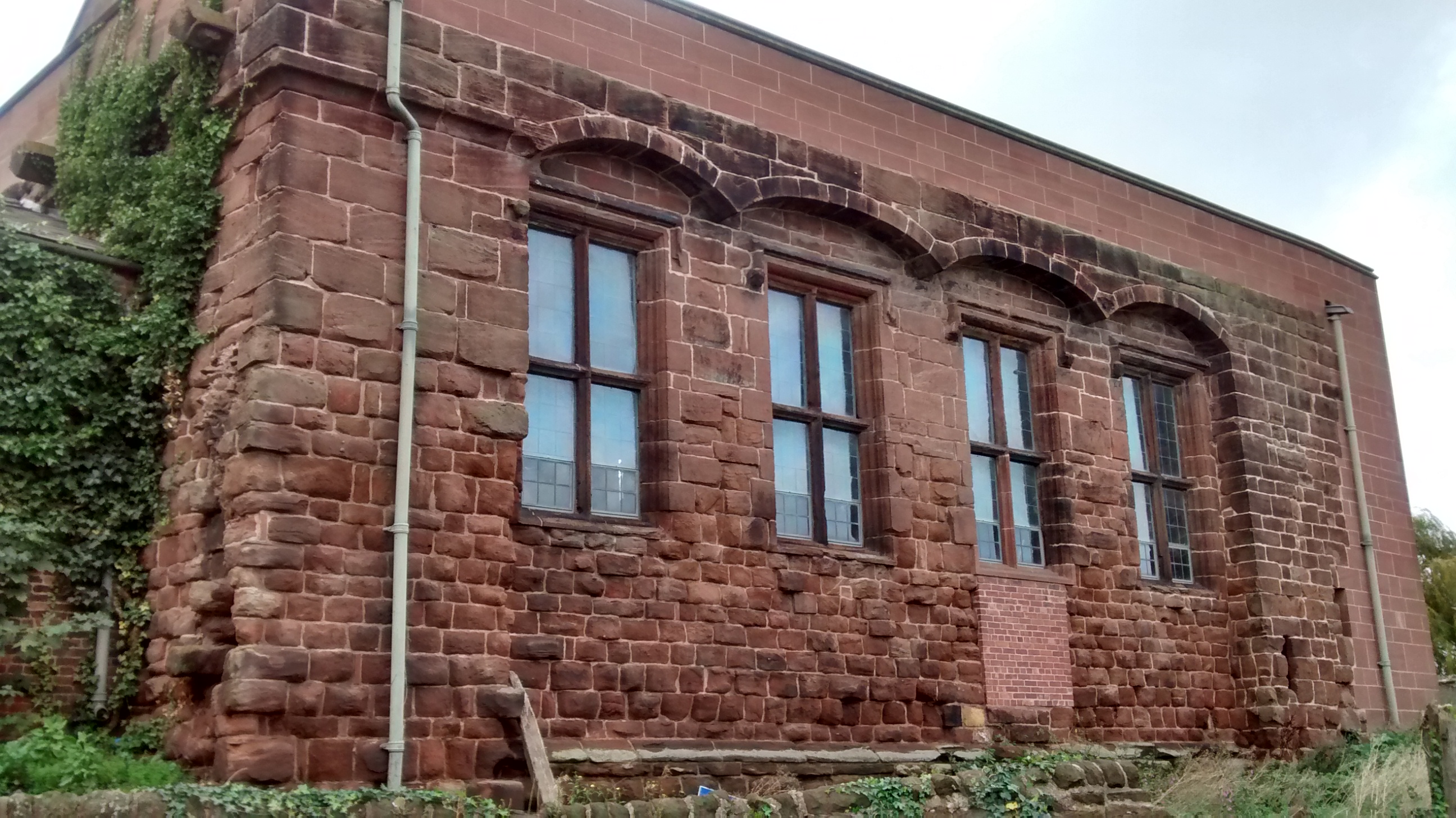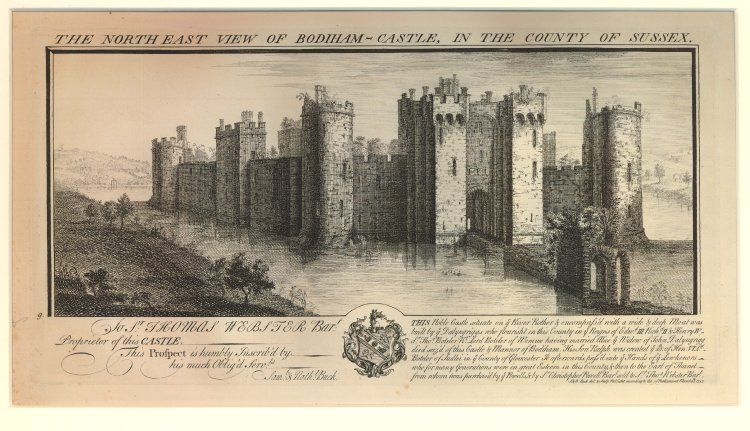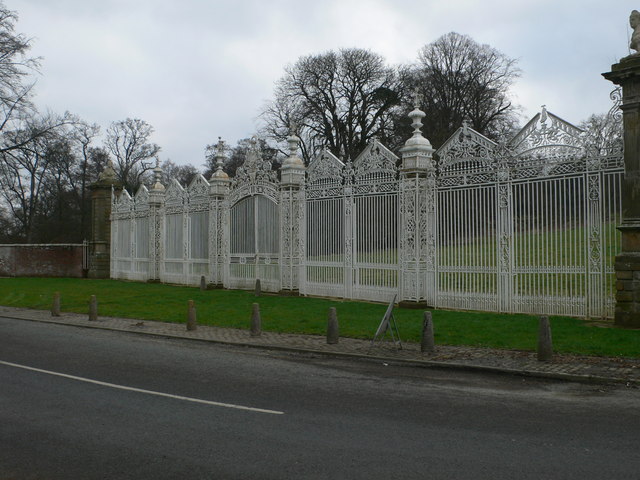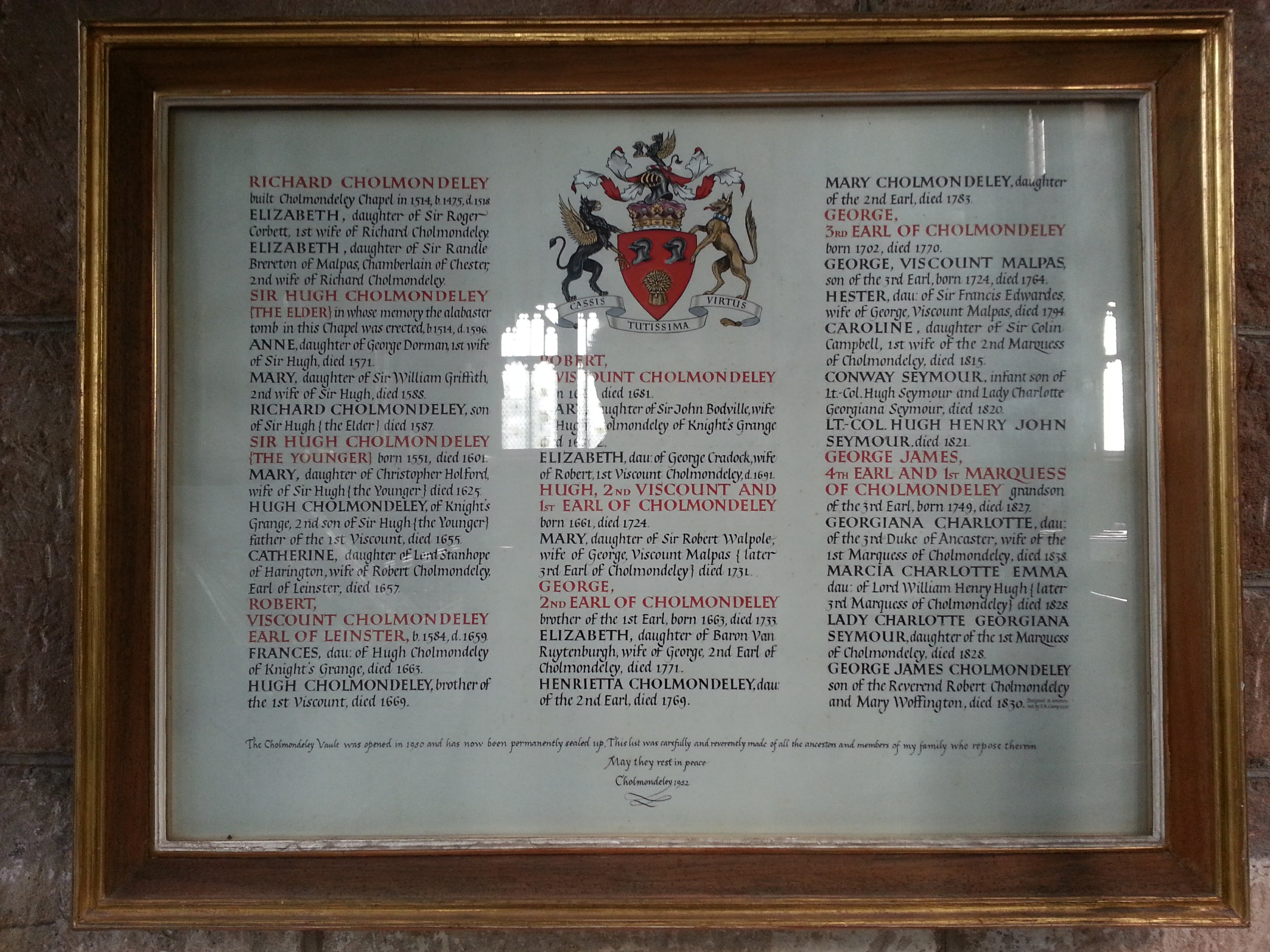|
Ince Manor
Ince Manor or Ince Grange is a former monastic grange in the village of Ince in Cheshire, England. The remains of the manor house, consisting of the old hall and the monastery cottages, are recorded in the National Heritage List for England as a designated Grade I listed building, and a scheduled monument It is one of only two surviving monastic manorial buildings in Cheshire, the other being Saighton Grange Gatehouse. History Ince Manor is one of the earliest recorded properties of St Werburgh's Abbey, Chester, and was recorded in the Domesday Book. In 1277 Edward I was entertained at the manor. In 1399 and again in 1410 a licence to crenellate was obtained. Following the dissolution of the monasteries the manor remained in church ownership until 1547 when it passed to Sir Richard Cotton, and from his son George, to Sir Hugh Cholmondeley. It then passed to the Vale Royal branch of the Cholmondeleys until 1724, when it was sold by Charles Cholmon ... [...More Info...] [...Related Items...] OR: [Wikipedia] [Google] [Baidu] |
Samuel And Nathaniel Buck
Samuel Buck (1696 – 17 August 1779) and his brother Nathaniel Buck (died 1759/1774) were English engravers and printmakers, best known for their ''Buck's Antiquities'', depictions of ancient castles and monasteries. Samuel produced much work on his own but when the brothers worked together, they were usually known as the Buck Brothers. More is known about Samuel than Nathaniel. Careers Samuel Buck was born in Yorkshire in 1696. After publishing some prints in that county he moved to London. With Nathaniel he embarked on making a number of series of prints of "antiquities", which consisted of ancient castles and former religious buildings in England and Wales. Starting in 1724, they travelled around these countries, and completed sets of prints for the regions of England by 1738 and for Wales between 1739 and 1742. These are commonly known as ''Buck's Antiquities''. During this time they also worked on a series of townscapes In the visual arts, a cityscap ... [...More Info...] [...Related Items...] OR: [Wikipedia] [Google] [Baidu] |
Domesday Book
Domesday Book () – the Middle English spelling of "Doomsday Book" – is a manuscript record of the "Great Survey" of much of England and parts of Wales completed in 1086 by order of King William I, known as William the Conqueror. The manuscript was originally known by the Latin name ''Liber de Wintonia'', meaning "Book of Winchester", where it was originally kept in the royal treasury. The '' Anglo-Saxon Chronicle'' states that in 1085 the king sent his agents to survey every shire in England, to list his holdings and dues owed to him. Written in Medieval Latin, it was highly abbreviated and included some vernacular native terms without Latin equivalents. The survey's main purpose was to record the annual value of every piece of landed property to its lord, and the resources in land, manpower, and livestock from which the value derived. The name "Domesday Book" came into use in the 12th century. Richard FitzNeal wrote in the '' Dialogus de Scaccario'' ( 1179) that the bo ... [...More Info...] [...Related Items...] OR: [Wikipedia] [Google] [Baidu] |
Grade I Listed Buildings In Cheshire
The county of Cheshire is divided into four unitary authorities: Cheshire West and Chester, Cheshire East, Warrington, and Halton. As there are 142 Grade I listed buildings in the county they have been split into separate lists for each unitary authority. * Grade I listed buildings in Cheshire West and Chester * Grade I listed buildings in Cheshire East * Grade I listed buildings in Warrington * Grade I listed buildings in Halton (borough) See also * Grade I listed churches in Cheshire * Grade I listed non-ecclesiastical buildings in Cheshire :''This list does not contain the Grade I listed churches, or the Grade I listed buildings in the city of Chester. For these see Grade I listed churches in Cheshire and Grade I listed buildings in Chester.'' The Grade I listed buildings in Che ... * Grade II* listed buildings in Cheshire {{GradeIListedbuilding * * ... [...More Info...] [...Related Items...] OR: [Wikipedia] [Google] [Baidu] |
Stocks
Stocks are feet restraining devices that were used as a form of corporal punishment and public humiliation. The use of stocks is seen as early as Ancient Greece, where they are described as being in use in Solon's law code. The law describing its use is cited by the orator Lysias: "“He shall have his foot confined in the stocks for five days, if the court shall make such addition to the sentence.” The “stocks” there mentioned, Theomnestus, are what we now call “confinement in the wood”" (''Lys''. 10.16) Form and applications The stocks, pillory, and pranger each consist of large wooden boards with hinges; however, the stocks are distinguished by their restraint of the feet. The stocks consist of placing boards around the ankles and wrists, whereas with the pillory, the boards are fixed to a pole and placed around the arms and neck, forcing the punished to stand. Victims may be insulted, kicked, tickled, spat on, or subjected to other inhumane acts. In the Bible, ... [...More Info...] [...Related Items...] OR: [Wikipedia] [Google] [Baidu] |
National Lottery (United Kingdom)
The National Lottery is the state- franchised national lottery established in 1994 in the United Kingdom. It is regulated by the Gambling Commission, and is currently operated by Camelot Group, to which the licence was granted in 1994, 2001 and again in 2007, but will be operated by Allwyn Entertainment Ltd from 2024. Prizes are paid as a lump sum (with the exception of the Set For Life which is paid over a set period) and are tax-free. Of all money spent on National Lottery games, around 53% goes to the prize fund and 25% to "good causes" as set out by Parliament (though some of this is considered by some to be a form of "stealth tax" levied to support the National Lottery Community Fund, a fund constituted to support public spending). 12% goes to the UK Government as lottery duty, 4% to retailers as commission, and a total of 5% to operator Camelot, with 4% to cover operating costs and 1% as profit. From introduction in November 1994 until April 2021, lottery tickets were ab ... [...More Info...] [...Related Items...] OR: [Wikipedia] [Google] [Baidu] |
Cheshire County Council
Cheshire County Council was the county council of Cheshire. Founded on 1 April 1889, it was officially dissolved on 31 March 2009, when it and its districts were superseded by two unitary authorities; Cheshire West and Chester and Cheshire East. At the time of its abolition in 2009, it had six districts: Chester, Congleton, Crewe and Nantwich, Ellesmere Port and Neston, Macclesfield, and Vale Royal. History Cheshire County Council was created on 1 April 1889 under the Local Government Act 1888, which established elected county councils across England and Wales to take over the local government functions previously performed by the Quarter Sessions. Certain large towns were made county boroughs, administering their own affairs independently from the county councils. When Cheshire County Council was established in 1889, three county boroughs were created in Cheshire: Birkenhead, Chester, and Stockport. The area of the county excluding these towns was known as the administrat ... [...More Info...] [...Related Items...] OR: [Wikipedia] [Google] [Baidu] |
Ince Manor
Ince Manor or Ince Grange is a former monastic grange in the village of Ince in Cheshire, England. The remains of the manor house, consisting of the old hall and the monastery cottages, are recorded in the National Heritage List for England as a designated Grade I listed building, and a scheduled monument It is one of only two surviving monastic manorial buildings in Cheshire, the other being Saighton Grange Gatehouse. History Ince Manor is one of the earliest recorded properties of St Werburgh's Abbey, Chester, and was recorded in the Domesday Book. In 1277 Edward I was entertained at the manor. In 1399 and again in 1410 a licence to crenellate was obtained. Following the dissolution of the monasteries the manor remained in church ownership until 1547 when it passed to Sir Richard Cotton, and from his son George, to Sir Hugh Cholmondeley. It then passed to the Vale Royal branch of the Cholmondeleys until 1724, when it was sold by Charles Cholmon ... [...More Info...] [...Related Items...] OR: [Wikipedia] [Google] [Baidu] |
Ince Manor 4a for people with the surname 'Ince'
{{geodis ...
Ince may refer to: *Ince, Cheshire, a village in Cheshire, UK *Ince-in-Makerfield in the Metropolitan Borough of Wigan, UK *Ince (UK Parliament constituency), a former constituency covering Ince-in-Makerfield *Ince (ward), an electoral ward covering Ince-in-Makerfield *Ince Blundell, a village in Merseyside, UK * Ince Castle, a manor house in Cornwall, UK *İncə, Goychay, Azerbaijan *İncə, Shaki, Azerbaijan * Ince & Co, international law firm See also * Ince (surname) Ince is an English toponymic surname, from Ince, Cheshire, Ince in Cheshire or one of two places historically in Lancashire (now known as Ince Blundell and Ince-in-Makerfield). İnce is a Turkish surname (). The name may refer to: * Ada Ince (1913 ... [...More Info...] [...Related Items...] OR: [Wikipedia] [Google] [Baidu] |
Moat
A moat is a deep, broad ditch, either dry or filled with water, that is dug and surrounds a castle, fortification, building or town, historically to provide it with a preliminary line of defence. In some places moats evolved into more extensive water defences, including natural or artificial lakes, dams and sluices. In older fortifications, such as hillforts, they are usually referred to simply as ditches, although the function is similar. In later periods, moats or water defences may be largely ornamental. They could also act as a sewer. Historical use Ancient Some of the earliest evidence of moats has been uncovered around ancient Egyptian castles. One example is at Buhen, a castle excavated in Nubia. Other evidence of ancient moats is found in the ruins of Babylon, and in reliefs from ancient Egypt, Assyria, and other cultures in the region. Evidence of early moats around settlements has been discovered in many archaeological sites throughout Southeast Asia, including ... [...More Info...] [...Related Items...] OR: [Wikipedia] [Google] [Baidu] |
Leeswood
Leeswood ( cy, Coed-llai) is a village, community and electoral ward in Flintshire, Wales, about four miles from the historic market town of Mold. At the 2001 Census, the population was 2,143, reducing slightly to 2,135 at the 2011 Census. It was the centre of attention during the Mold Riot of 1869, where the owners of the mine refused to allow the speaking of the Welsh language in the mines. Around a quarter of Leeswood's resident population has some knowledge of the Welsh language, exceeding the county's average of 21.4%. In all categories of linguistic competency, the ward performs around the Flintshire average, although the proportion of those able only to understand spoken Welsh is higher than the county and national average. The famous White Gates of Leeswood Hall were attributed to the Davies brothers of Wrexham. The family of smiths were known in the 18th Century for their high-quality work using wrought-iron. The Wynne baronets were later to live in Leeswood Hall ... [...More Info...] [...Related Items...] OR: [Wikipedia] [Google] [Baidu] |
Vale Royal
A vale is a type of valley. Vale may also refer to: Places Georgia * Vale, Georgia, a town in the Samtskhe-Javakheti region Norway * Våle, a historic municipality Portugal * Vale (Santa Maria da Feira), a former civil parish in the municipality of Santa Maria da Feira Romania * Vale, a village in Aluniş Commune, Cluj County * Vale, a village in Toplița city, Harghita County * Vale ( hu, Vále, link=no), a village in Săliște town, Sibiu County United Kingdom * Vale, Guernsey, a parish in Guernsey * Vale of Glamorgan, a county borough in South Wales, commonly referred to as "The Vale" * Vale of Leven, an area of West Dunbartonshire, Scotland, also knownas "The Vale" United States * Vale, Avery County, North Carolina * Vail, Colorado * Vale, Lincoln County, North Carolina * Vale, Oregon * Vale, South Dakota * Vale, West Virginia * Vale Summit, Maryland * Vale Township, Butte County, South Dakota * Vale Tunnel, Raytown, Missouri * Lyman Estate, known as "The Vale", ... [...More Info...] [...Related Items...] OR: [Wikipedia] [Google] [Baidu] |
Hugh Cholmondeley (soldier)
Sir Hugh Cholmondeley (1513 – 6 January 1596) was an English soldier. Life Cholmondeley was the second son of Richard Cholmondeley (not to be confused with a cousin, Richard Cholmondeley) and Elizabeth Brereton. The Cholmondeley family had held the lordship of Cholmondeley in Cheshire since the time of the Norman conquest. He succeeded his elder brother who died in 1539. He fought against the Scots in 1542 and for this he was knighted by King Henry VIII. In 1557, he raised one hundred men at his own expense and joined the Earl of Derby in his expedition against an invading Scottish army. Apart from his military career he was also High Sheriff (six times between 1547 and 1588), Deputy Lieutenant of Cheshire (1569, 1585, 1587), Custos Rotulorum of Cheshire (1579 to his death) and High Sheriff of Flintshire for 1582–83. Family Cholmondeley married heiress Ann Dorman, daughter of George Dorman of Malpas. Cholmondeley died in January 1596 and was buried at Malpas. He w ... [...More Info...] [...Related Items...] OR: [Wikipedia] [Google] [Baidu] |



.png)


